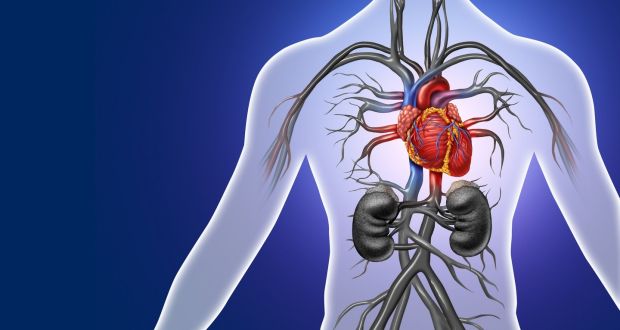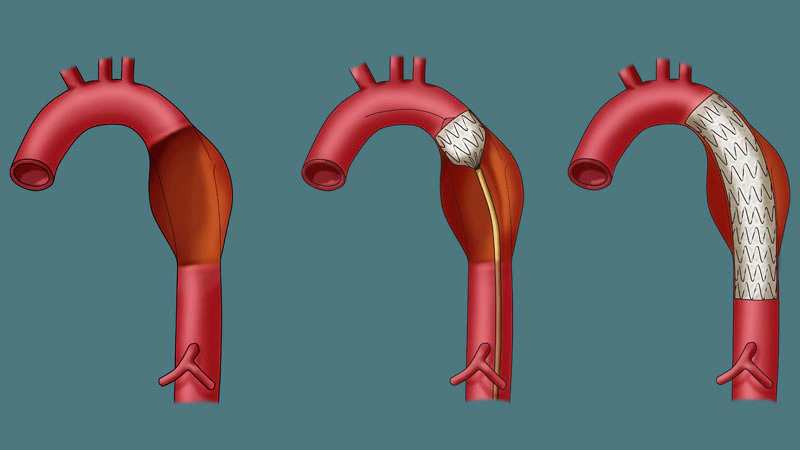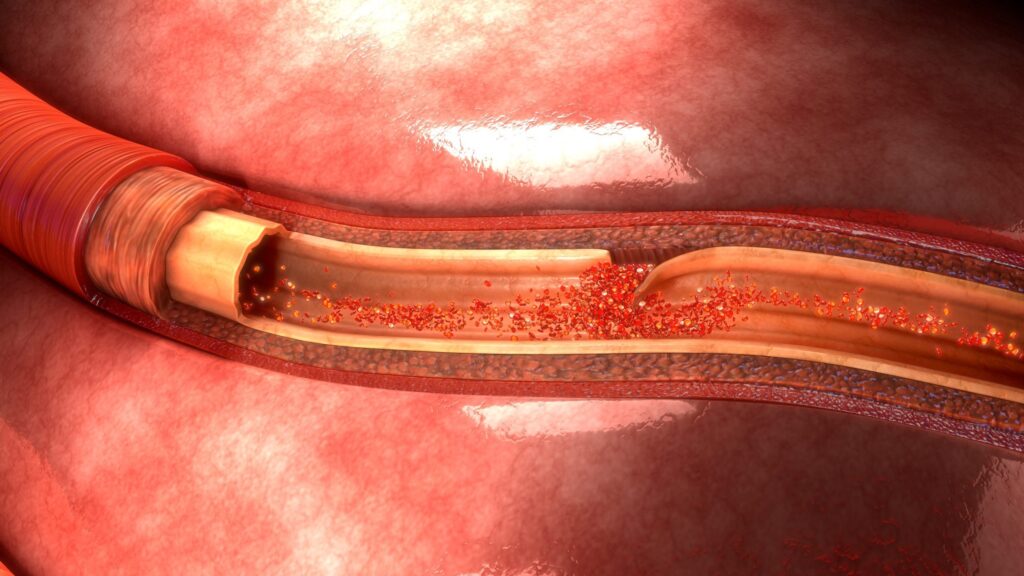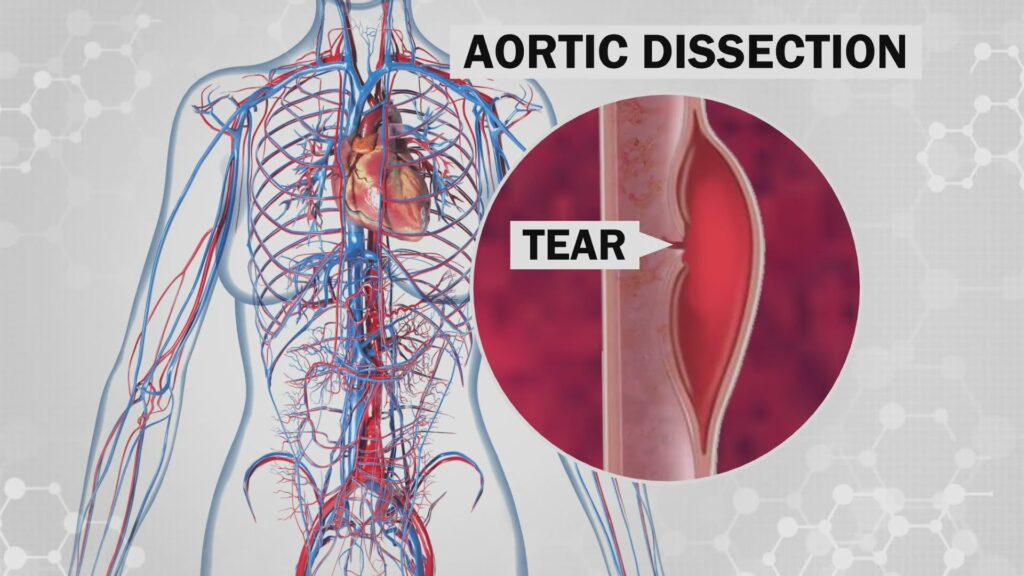WHAT IS AORTIC DISSECTION?
An aortic dissection is a severe condition in which a tear happens in the inner layer of the body’s major artery (aorta). The blood flows through the tear, causing the internal and middlemost layers of the aorta to split (dissect). If the blood flows through the outside aortic wall, aortic dissection is usually deadly.
Aortic dissection is relatively rare. It generally happens in men in their 60s and 70s. Symptoms of aortic dissection might mimic those of other illnesses, usually leading to delays in diagnosis. Although, when an aortic dissection is identified early and treated immediately, the chances of survival improve considerably.

AORTIC DISSECTION SYMPTOMS
Aortic dissection symptoms might be similar to those of other heart problems, like a heart attack. Common signs and symptoms include:
- Unexpected serious chest or upper back pain, usually described as a tearing or ripping sensation, that spreads to the neck or down the back
- Unexpected serious stomach pain
- Loss of consciousness
- Shortness of breath
- Symptoms similar to those of a stroke, including unexpected vision problems, trouble speaking, and weakness or loss of movement (paralysis) on one side of your body
- Weak pulse of one arm or thigh compared to another
- Leg pain
- Trouble walking

WHEN SHOULD YOU SEE A DOCTOR?
If you have serious chest pain, fainting, unexpected shortness of breath, or symptoms of a stroke, call 911 or your local emergency number. These signs and symptoms are not always because of a severe problem, but it is best to be seen by a doctor or primary care physician quickly. Early identification and treatment might help save your life.
AORTIC DISSECTION CAUSES
An aortic dissection is caused by a weakened region of the aorta’s wall.
Aortic dissections are divided into two groups, depending on which portion of the aorta is affected:
- Aortic Dissection Type A – This more frequent and dangerous type involves a tear in the portion of the aorta where it exits the heart. The tear might also happen in the upper aorta (ascending aorta), which might extend into the abdomen.
- Aortic Dissection Type B – This type involves a tear of the lower aorta only (descending aorta), which might also spread into the abdomen.

AORTIC DISSECTION RISK FACTORS
Some of the things that might increase your risk of aortic dissection include:
- Uncontrolled high blood pressure (hypertension)
- Hardening of the arteries (atherosclerosis)
- Weakened and bulging artery (aortic aneurysm)
- An aortic valve defect (bicuspid aortic valve)
- A narrowing of the aorta at the time of birth (aortic coarctation)
Specific genetic diseases raise the risk of having an aortic dissection, including:
- Turner syndrome – High blood pressure, heart problems, and other health conditions might result from this disorder.
- Marfan syndrome – This is a condition in which connective tissue, which supports several structures in the body, is weak. People with this disorder usually have a family history of aneurysms of the aorta and other blood vessels or a family history of aortic dissections.
- Other connective tissue disorders – This includes Ehlers-Danlos syndrome, a group of connective tissue disorders that involve loose joints and weak blood vessels, and Loeys-Dietz syndrome, which causes twisted arteries, particularly in the neck.
Swelling of the arteries (giant cell arteritis) might also raise your risk of aortic dissection.
Other possible risk factors for aortic dissection include:
- Sex – Men are more likely to have aortic dissection as compared to women.
- Age – Aortic dissection is more likely in people age 60 years and older.
- Cocaine use – This drug momentarily increases blood pressure.
- Pregnancy – Infrequently, aortic dissections happen in otherwise healthy women at the time of pregnancy.
- High-intensity weightlifting – This and other strenuous resistance training might increase your risk of aortic dissection by increasing blood pressure at the time of the activity.
AORTIC DISSECTION COMPLICATIONS
Potential complications of aortic dissection include:
- Death because of severe internal bleeding
- Organ damage, like kidney failure or life-threatening intestinal damage
- Stroke
- Aortic valve damage (aortic regurgitation) or rupture into the lining near the heart (cardiac tamponade)
AORTIC DISSECTION PREVENTION
You could lower your risk of aortic dissection by preventing chest injury and taking steps to keep your heart healthy.
- Control blood pressure – If you have high blood pressure, buy a home blood pressure measuring device to help you monitor your blood pressure.
- Do not smoke – If you do smoke, take steps to stop.
- Maintain an ideal weight – Follow a low-salt diet with plenty of fruits, vegetables, and whole grains and exercise daily.
- Wear a seat belt – This lowers the risk of chest injury during a car accident.
- Work with your doctor – If you have a family history of aortic dissection, a connective tissue disorder, or a bicuspid aortic valve, tell your doctor or primary care physician. If you have an aortic aneurysm, find out how often you require monitoring and if surgery is required to repair your aneurysm.
If you have a genetic condition that raises your risk of aortic dissection, your doctor or primary care physician might recommend medications, even if your blood pressure is normal.
AORTIC DISSECTION DIAGNOSIS
Detecting an aortic dissection could be a challenge because the symptoms are similar to those of many other health problems. Your doctor or primary care physician might think you have an aortic dissection if you have:
- Unexpected tearing or ripping chest pain
- The blood pressure difference between the right and left arms
- Widening of the aorta on chest X-ray
Tests to diagnose aortic dissection include:
- Transesophageal echocardiogram (TEE) – This test uses sound waves to create images of the heart in motion. A transesophageal echocardiogram (TEE) is a special type of echocardiogram in which an ultrasound probe (transducer) is guided through your esophagus and placed close to your heart. This test gives your doctor or primary care physician a better understanding of your heart and aorta than would a regular echocardiogram.
- Computerized tomography (CT) scan of the chest – X-ray is used to produce cross-sectional pictures of the body. A computerized tomography (CT) scan of the chest could confirm a diagnosis of aortic dissection.
- Magnetic resonance angiogram (MRA) – A magnetic resonance angiogram (MRA) uses a magnetic field and radio wave energy to create pictures of your blood vessels.

AORTIC DISSECTION TREATMENT
An aortic dissection is a medical emergency needing immediate treatment. Treatment might include surgery or medications, depending on the region of the aorta involved.
Type A Aortic Dissection
Treatment for type A aortic dissection might include:
Aortic Dissection Surgery – Surgeons remove as much of the dissected aorta as they can and prevent blood from entering the aortic wall. A synthetic tube (graft) is used for the reconstruction of the aorta. If the aortic valve leaks as a result of the damaged aorta, it might be replaced at the same time. The new valve is placed inside the graft.
Medications – Medications are given to lower heart rate and reduce blood pressure, which could prevent the aortic dissection from getting worse. They might be given to people with type A aortic dissection to control blood pressure before surgery.
Type B Aortic Dissection
Treatment of type B aortic dissection might include:
Medications – The same medications that are used to treat type A aortic dissection might be used without surgery to treat type B aortic dissections.
Aortic Dissection Surgery – The procedure is identical to that used to correct a type A aortic dissection. Sometimes stents tiny wire mesh tubes that act as a sort of scaffolding might be placed in the aorta to repair complicated type B aortic dissections.
After treatment, you might need to take medication to control your blood pressure for the rest of your life. You might need regular computed tomography (CT) scans or magnetic resonance imaging (MRI) scans to monitor your condition.
If you or anyone you know is suffering from an aortic dissection, our expert providers at Specialty Care Clinics will take care of your health and help you recover.
Call (469) 545-9983 to book your appointment for an at-home check-up.
